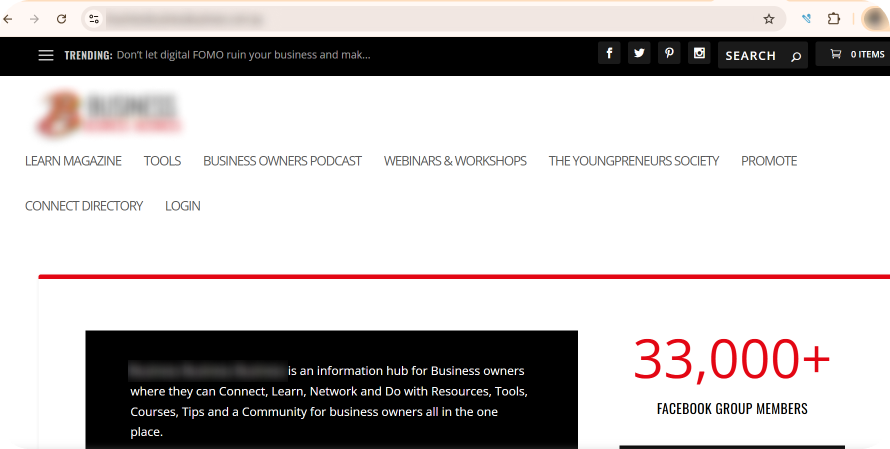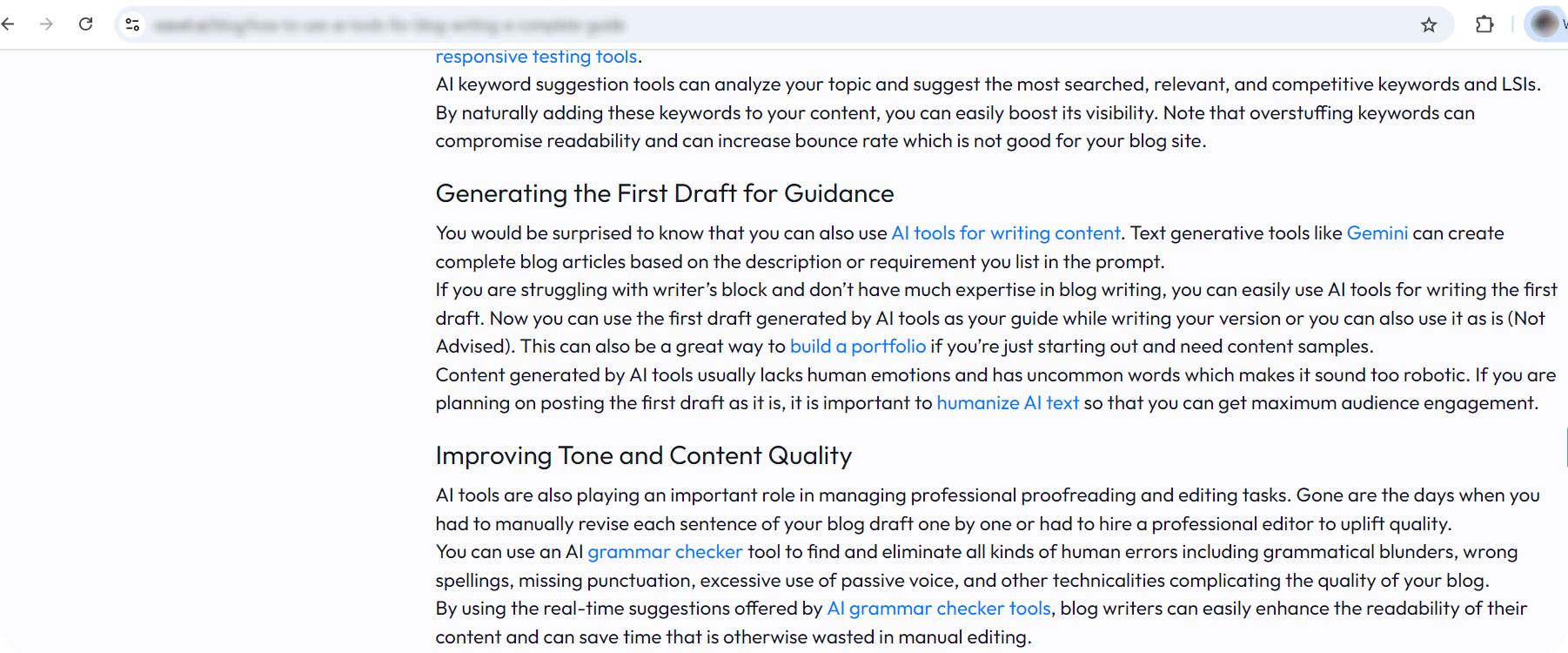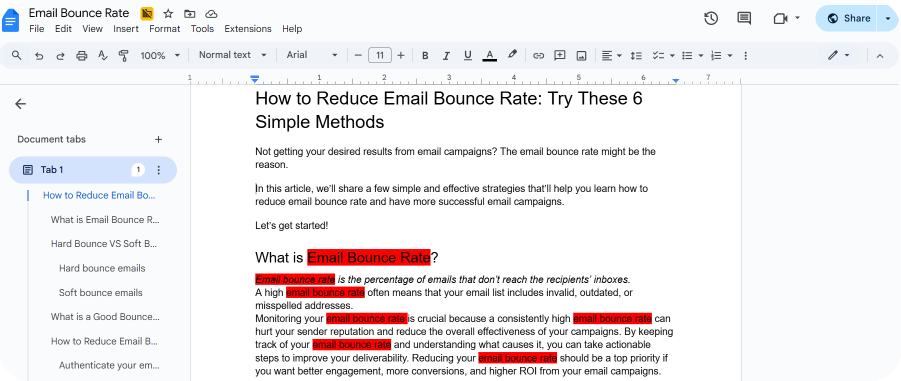Have you noticed how some websites show quick SEO improvements, and then suddenly drop in rankings or disappear from search results?
Often, it’s because these sites use sneaky tactics.
In this article, we’ll explore what black hat SEO is, whether it works, and how it compares to other methods. We’ll also cover the tactics to watch out for and share simple tips to help you stay safe.
What Is Black Hat SEO?
Black hat SEO refers to a set of unethical methods and shortcuts used to improve a website’s rankings. It focuses on manipulating the search engine algorithms and is against all guidelines.
You may be wondering, but why do some people still use black hat SEO tactics?
They do it to:
- Rank faster in search results
- Get more traffic in a short period
- Have visibility without putting in lots of effort or resources
Now, let’s see whether it’s effective or not!
Is Black Hat SEO Worth Practicing?
Black hat SEO can only be useful if you need fast results and are willing to take a risk.
For example, online casinos often employ these SEO tactics to make quick money.
However, these results don’t last. They are, in fact, short-term.
Especially now, since Google algorithms are constantly changing and getting smarter, the sneaky methods that may have worked a few years ago are now easily discovered and penalized.
So, even if you do try black hat SEO tactics, remember that as soon as Google detects any manipulation, your site will:
- Drop in rankings
- Lose traffic overnight
- Get penalties
- Even be removed from Google searches completely
That’s why using black hat SEO is not worth the risk, and we don’t recommend it if you’re looking to build a good brand reputation.
Now that black hat SEO is clear, let’s see how it compares to other SEO approaches!
White Hat vs Black Hat SEO vs Gray Hat SEO
Aside from the black hat SEO tactics, there are also white and gray hat methods, which are far less risky.
Let’s explore them!
What is white hat SEO?
White hat SEO focuses on optimization methods that are ethical and strictly follow Google’s policies.
Here are some examples of what we do as part of our white hat approach:
- Build good backlinks following white hat link building practices
- Create helpful content based on real experience or expertise
- Use relevant redirects that point to related topics – never send users to unrelated ones (e.g., from an SEO blog to a casino site)
Although white hat SEO takes more time and effort, it creates long-term trust and stable rankings.
What is gray hat SEO?
Gray hat SEO is between white and black hat methods. It involves methods that aren’t clearly against the rules, but not completely ethical either.
For example, let’s say there’s an old domain with good traffic and a high domain rating, but it’s no longer being used. You buy that domain and redirect it to your main website. Since the old domain still has keyword rankings and authority, some of that value will be transferred to your site.
All famous websites use a mix of white and gray hat, but never black hat tactics.
But where does link building stand in SEO practices? Let’s find out!
Is Link Building White Hat, Black Hat, or Gray Hat?
Actually, link building can be white hat, gray hat, or black hat, depending on how it’s done.
- White hat link building is about creating valuable, linkable content, also known as linkable assets. It’s the most ethical approach.
- Black hat link building includes buying backlinks or engaging in direct link exchanges (when two sites exchange links). You can get banned for this.
- Gray hat link building is what we do for our clients, indirect link exchanges. This is where a third party helps secure backlinks. It’s not detectable and doesn’t violate any guidelines.
The method and intent behind the link building determine how safe or risky it is from an SEO perspective.
Moving on to examining common black hat SEO techniques to look out for!
Black Hat SEO Techniques That Can Hurt Your Site
Now let’s take a look at some black hat SEO examples that may seem clever at first, but will almost always hurt your reputation.
It’s important to know these tactics so you don’t use them by mistake or assume they’re acceptable.
Keyword Stuffing
Keyword stuffing is when a page is overloaded with the same keyword just to boost rankings.
Let’s say your article’s primary keyword is “digital marketing”, and the phrase shows up four times in a short paragraph. Now that’s keyword stuffing.
A few years back, this method might have worked in improving your keyword rankings, but not anymore.
Google now easily detects this tactic and may penalize your website for using it.
Next one!
Adding Hidden Text in HTML
This black hat SEO technique involves adding extra content in the backend of a page that users don’t see.
For example, an article might appear to be 700 words long, but hidden code adds another 700 words that are invisible to the reader.
This fake content is added to trick Google into thinking the article is more valuable than it really is.
People do this to avoid spending time on writing good blog posts or doing proper SEO optimization.
But spoiler: Google’s algorithm will eventually notice the hidden texts, and the site could again get penalized or shadowbanned.
Link Farms
A link farm is a network of websites created to build backlinks between each other, to boost one main site.
For instance, someone might create 20 websites just to pass backlinks to their main domain. These sites link back and forth, trying to rank higher on Google.
This is usually done to avoid the real work involved in link building, like writing guest posts or building genuine partnerships.
But over time, Google can detect this kind of manipulation and drop the rankings.
On to the next black hat SEO method that can hurt your site!
Private Blog Networks (PBNs)
PBNs are networks of websites that sell backlinks, often at very low prices.
Some of these sites may look good at first, with decent metrics. But in reality, most are filled with poor content and spammy links.
You might see some short-term results by using PBNs to build your backlink profile. However, after every Google update, PBNs often lose their rankings, making their links worthless.
Now, if a PBN site finds your content helpful and links to it once or twice, that’s okay.
But if you have hundreds of backlinks from PBNs, it’s obvious you’re buying them, and Google will likely take action against your site.
Moving on!
Copying What Competitors Do
This black hat SEO tactic includes copying a competitor’s content strategy, topics, or even their wording, and then trying to outrank them through backlinks or optimization.
For example, your competitor writes an article titled “5 Social Media Marketing Strategies,” and you publish a very similar one with the same structure and ideas.
You must understand that this type of copying is black hat SEO, not inspiration.
What’s more, your competitor can easily report this.
And after Google checks and sees that they published the content first, it will penalize your website for copying.
Last one!
Fake Featured Snippets
Featured snippets are short answers that appear at the top of Google search results. They are often pulled from pages that use schema markup to highlight key content.
Although schema markup is a smart way to improve SEO, some sites use it to display fake claims on featured snippets.
For example, imagine you run an email marketing agency and write: “Mailchimp’s founder recommends our service,” even though that’s not true. If Google can’t verify the claim, it may show up in a snippet, driving traffic and improving your rankings.
This kind of false credibility works only until it’s exposed. In the long run, it can hurt both your rankings and brand reputation.
Now that we have examined some of the most common black hat SEO techniques, let’s move on to learning simple tips to avoid them!
How to Avoid Black Hat SEO: 5 Effective Tips
If you want to build a reputable brand with a strong online presence, then avoiding black hat SEO is essential.
Here’s what we focus on to keep our SEO clean, effective, and long-term.
Create Unique, User-Friendly Content
From choosing blog post ideas to writing the content, we focus on what we actually do at our agency.
Before we start writing, we interview our specialists to gather insights and proven results based on real experience.
That means:
- The content is original, not copied
- It’s written to help users, not just to rank
- Recommending mostly tested strategies
If something hasn’t worked for us, we won’t suggest it to others.
That’s how we keep our content unique, trustworthy, and helpful.
Build Relevant Backlinks
As a SaaS link building agency, we only build backlinks from credible SaaS websites for both ourselves and our clients.
But it’s not just about good websites. Relevance matters too.
For example, the anchor text “keyword research” placed inside an article about project management software doesn’t make sense. So, always ensure the link insertions are relevant.
Also, we recommend staying away from PBNs.
Here’s how to spot them:
- Weird blog, home or service page
- Too many links in every post
- Overall website looks spammy
Check out the screenshot below of a PBN site’s homepage and see how odd it looks without proper structure, content, or design.

A screenshot of a PBN site with a weird home page
If it looks suspicious, it’s best to avoid it and focus on link exchanges with only good, authoritative domains.
Avoid Link Stuffing
Overloading your articles with external links can hurt your rankings and be considered as black hat SEO.
For instance, many sites insert lots of client links without realizing that it can cause problems. But in reality, when too many links are stuffed into one section, it reduces the content’s credibility.
Check out the screenshot below to see just how spammy this looks in practice.

To avoid this from happening, only include external links when they add value and make sense in context.
Bonus Tip: We recommend placing one link per paragraph to keep the flow smooth and reader-friendly.
Use Keywords Naturally
Keyword density matters, but only if it’s natural.
So, remember the following points when optimizing your content with keywords:
- Don’t repeat the same phrase over and over
- Don’t force keywords into every sentence
- Write for the reader first, not the algorithm
You never want to stuff your content with keywords and make it sound robotic, like in the screenshot below.

Always keep in mind that overusing keywords makes content hard to read and hurts both user experience and rankings.
Stay Updated and Follow Google’s Guidelines
Google is regularly updating its algorithm and guidelines.
So, to stay on the right side of SEO, you must:
- Study Google’s official updates
- Keep up with SEO trends and learn what works today
- Make sure your content is expert-written, original, and easy to navigate
As Google E-E-A-T guidelines state, it is inclined to reward content that is user-first, helpful, and honest.
So, the more your content fits that standard, the better your results will be.
Let’s wrap up!
Closing Thoughts
As you can see, although black hat SEO gives quick results, in the end, it usually causes penalties, lost traffic, and harm to your website.
That’s why it is better to focus on honest optimization methods that create value for users and follow the rules.
If you want lasting SEO success without the risks, contact our specialists. We will help you grow your site using only ethical and effective strategies.
FAQ about black hat SEO
What do you mean by black hat SEO?
Black hat SEO refers to unethical tactics used to quickly improve a website’s rankings. These methods violate search engine guidelines and can lead to penalties.
What is black, white, and grey hat SEO?
Black hat SEO uses unethical tricks to rank fast. White hat SEO follows rules and focuses on quality content. Grey hat SEO is a mix of both.
What is a Google penalty for SEO?
A Google penalty is when Google lowers your website’s ranking because it broke the rules or used bad SEO tricks.
How to report black hat SEO?
You can report black hat SEO by using Google’s Spam Report form to let them know about websites that break the rules.


